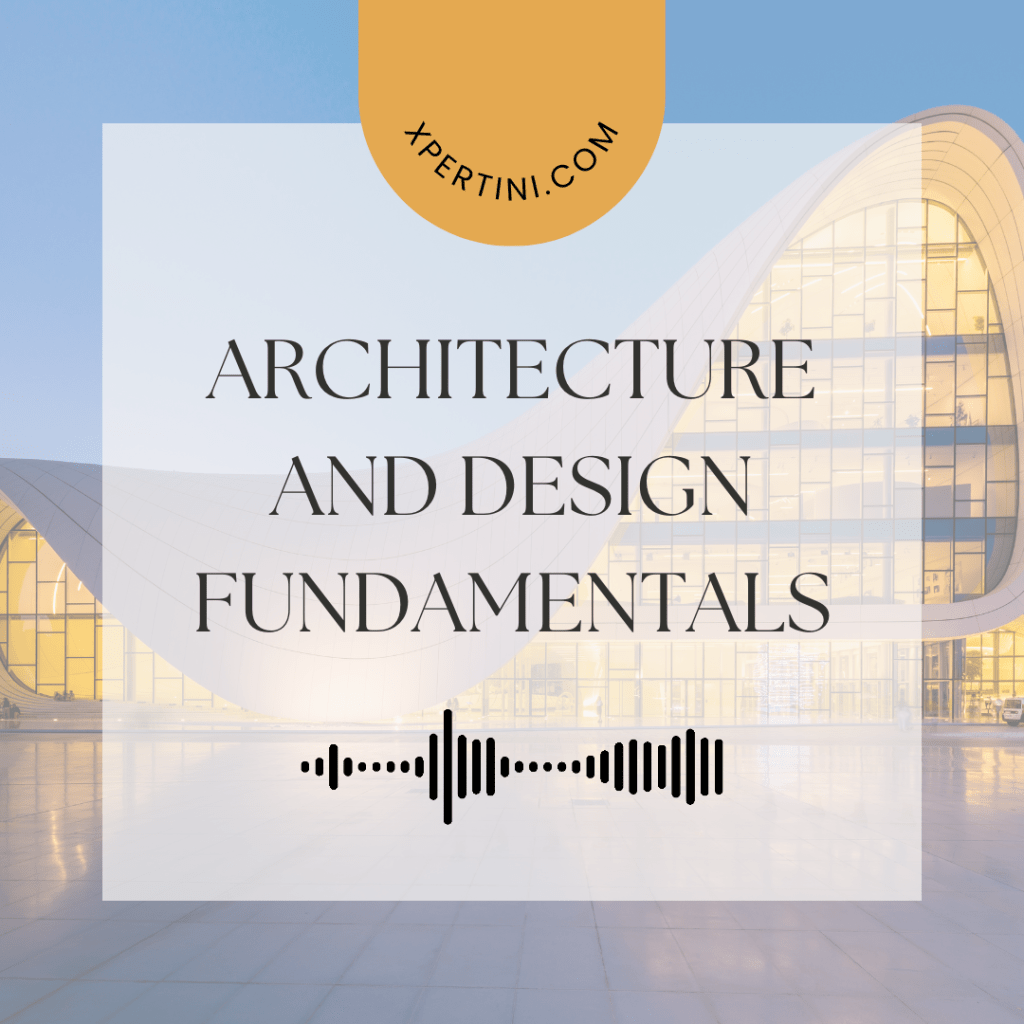Architecture and Design Fundamentals
Course Summary
In this comprehensive architectural course, we embark on a journey through the fundamental principles of architectural design. Aimed at aspiring architects and those seeking to augment their knowledge, this course delves into the evolution of architectural styles, key historical milestones, and the contributions of influential architects.
Our exploration begins with an insightful look into the historical perspective of architecture, revealing the evolution of styles and the impactful milestones that have shaped the built environment. We navigate through the richness of architectural history, gaining an understanding of how the interplay of societal, cultural, and technological factors has influenced the design landscape.
Moving forward, we delve into the core of design principles, deciphering the fundamental elements that underpin every architectural creation. From the delicate balance between form and function to the exploration of sustainable design principles, each lesson unfolds as a testament to the meticulous craftsmanship involved in architectural design.
Cultural and social influences take center stage, guiding us through the impact of societal on architectural trends. Through compelling case studies, we examine culturally significant structures, gaining insights into the delicate dance between tradition and innovation that architects navigate.
Our exploration extends to the structural elements that form the backbone of architectural marvels, revealing the secrets behind different architectural styles. From classical to contemporary, we analyze the distinctive features that define these styles, providing a comprehensive understanding for aspiring architects.
The course then introduces essential design tools and software, equipping learners with the practical skills required in the industry. Critical analysis takes the spotlight in the latter part of the course, emphasizing the development of critical thinking skills for effective design assessment. Learners are guided in establishing criteria for evaluating design projects, honing their ability to make informed decisions in the ever-evolving field of architecture.
As we navigate through interdisciplinary approaches, we explore the symbiotic relationship between architecture and other disciplines. Collaborative projects showcase how interdisciplinary design solutions can push the boundaries of creativity, resulting in innovative and holistic architectural solutions.
Finally, the course concludes with a pragmatic overview of diverse career paths within architecture and design. Providing guidance on building a successful career, we empower individuals to navigate the professional landscape with confidence.
In this intellectual journey, each lesson weaves together a comprehensive understanding of architecture, from its historical roots to its contemporary manifestations, preparing you for a rewarding career in the world of architectural design.
Course Overview
This course provides a comprehensive exploration of the principles, history, and practical applications of architecture and design. Participants will gain a deep understanding of the fundamental concepts, historical perspectives, and career opportunities within this field.
Course Objectives
Understand the foundational principles of architecture and design.
Explore the historical evolution of architecture and design.
Develop practical skills for effective architectural and design problem-solving.
Gain insights into the impact of cultural, social, and technological factors on design.
Acquire knowledge of sustainable and environmentally conscious design practices.
Familiarize oneself with architectural styles, structures, and their significance.
Learn to use design tools and software for effective communication.
Develop critical thinking skills for evaluating and analyzing design projects.
Explore interdisciplinary approaches in architecture and design.
Identify and pursue diverse career opportunities within the field.
Course Outcomes
Demonstrate an understanding of fundamental architectural and design principles.
Analyze historical architectural developments and their influence on contemporary design.
Apply problem-solving skills to real-world design challenges.
Integrate cultural, social, and technological factors into their design considerations.
Evaluate the environmental impact of design decisions and propose sustainable solutions.
Differentiate between various architectural styles and structures.
Effectively utilize design tools and software for communication.
Critically analyze and evaluate design projects using established criteria.
Explore interdisciplinary connections between architecture and other fields.
Identify and pursue potential career opportunities within the architecture and design industry.
Course Audience
Individuals aspiring to pursue a career in architecture or design.
Professionals seeking to enhance their knowledge and skills in the field.

